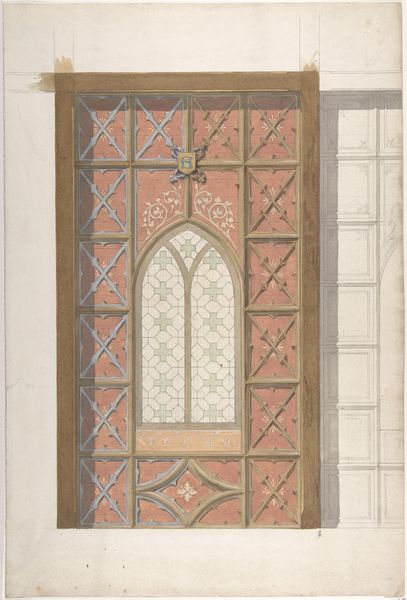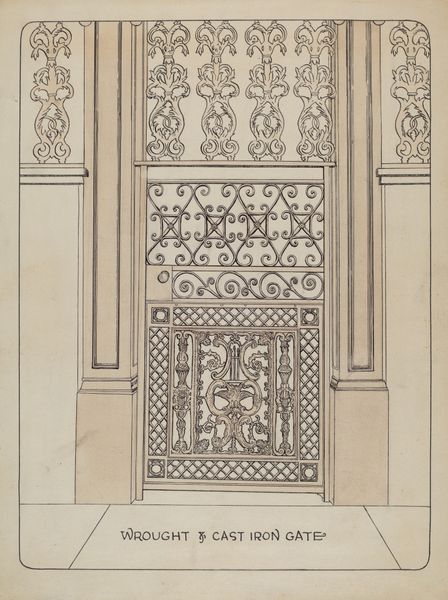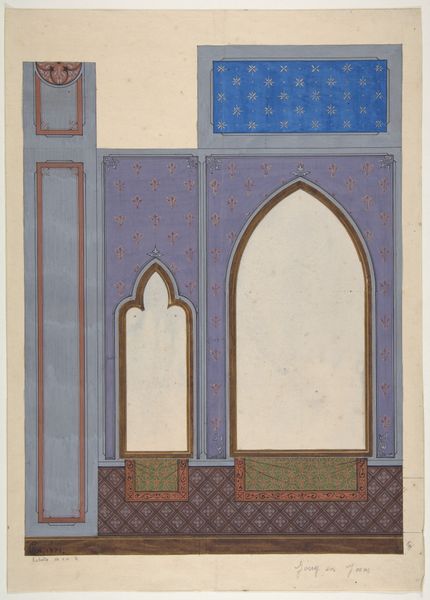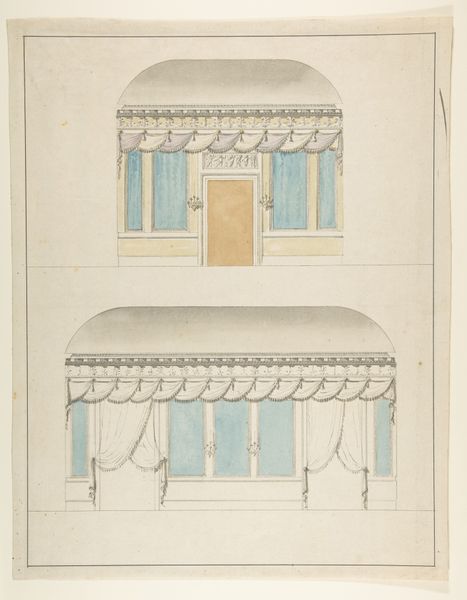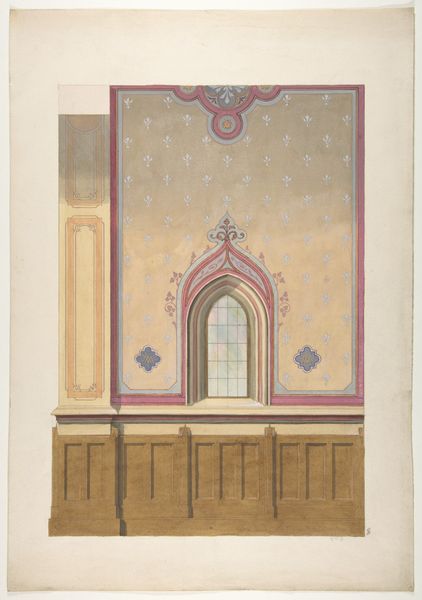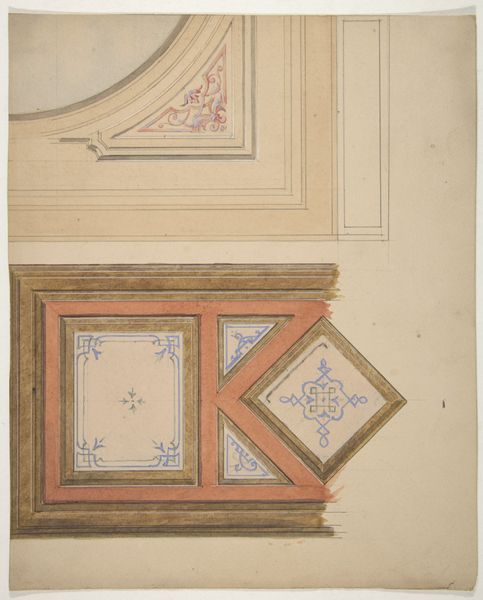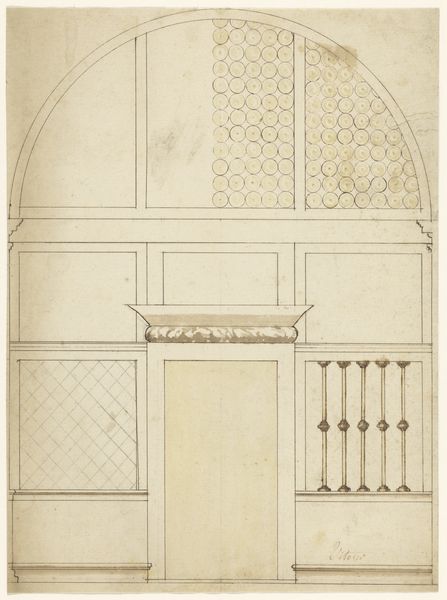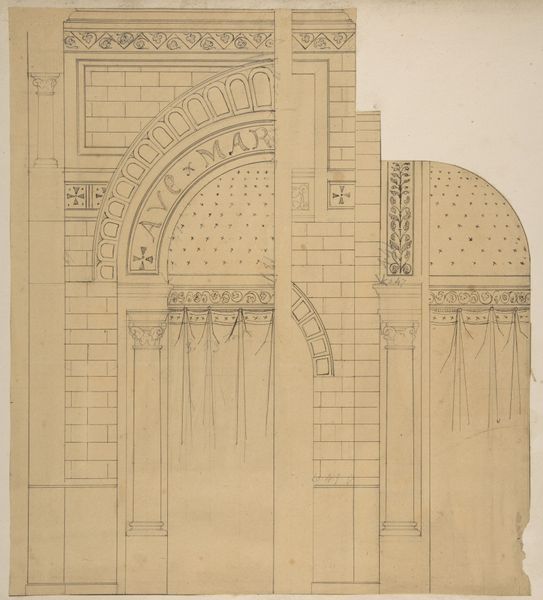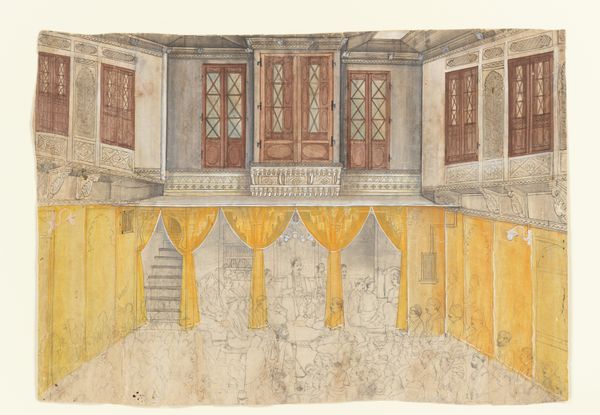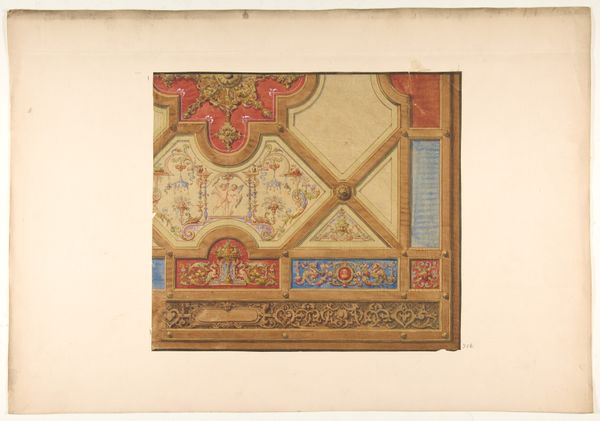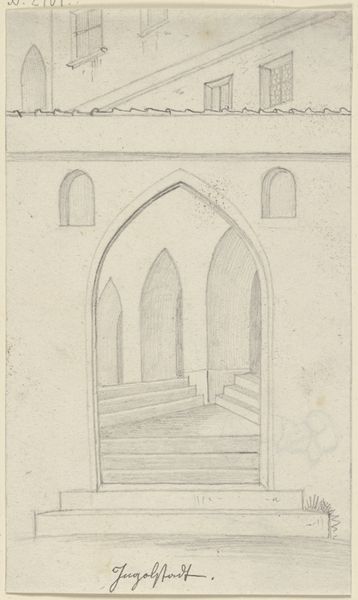
Elevation of Nave, Chapelle des Catéchismes, Ste Clothilde, Paris 1850 - 1900
0:00
0:00
drawing, tempera, print, paper, architecture
#
drawing
#
medieval
#
tempera
# print
#
paper
#
history-painting
#
architecture
Dimensions: 19 1/2 x 13 5/16 in. (49.6 x 33.8 cm)
Copyright: Public Domain
Editor: Here we have Jules-Edmond-Charles Lachaise’s "Elevation of Nave, Chapelle des Catéchismes, Ste Clothilde, Paris," created sometime between 1850 and 1900, rendered in drawing, tempera, and print on paper. What strikes me immediately is the tension between the highly ornamental architectural design and what seems like a cool, detached depiction of it. What stands out to you? Curator: For me, this piece opens up an investigation into the very methods of architectural representation during this period. Consider the materials employed—drawing, tempera, print—and the labor involved in their production. This isn't just a blueprint; it’s a carefully constructed image intended to circulate and perhaps influence tastes. Editor: That’s interesting. It shifts my perspective away from purely aesthetic appreciation. So, you’re suggesting we should focus on the techniques used in making the artwork rather than its apparent subject, which is architecture. How does that relate to social context, though? Curator: Think about it this way: who was commissioning these drawings? Who was consuming them? The rise of industrial printing made images like these far more accessible, impacting architectural trends and the democratization of design knowledge. It makes me question traditional boundaries between “high art” and accessible crafts or even industrial design. How does this influence your understanding? Editor: It definitely adds another layer! The reproducibility allows wider circulation. And, if it democratized access to design ideas, then potentially more diverse artisans and tradespeople had more impact. I see now, it becomes not just an elevation of a nave, but almost an elevation of the craftspeople involved! Curator: Exactly! It pushes us to acknowledge that art isn't produced in a vacuum but is embedded within a complex network of materials, labor, and socio-economic forces. Editor: I had never thought about architectural renderings this way before. I was too focused on what it represented, and not *how* and *why* it was created. Curator: That's precisely the value of a materialist lens; it constantly invites us to re-evaluate and deconstruct traditional notions of art and its role in society.
Comments
No comments
Be the first to comment and join the conversation on the ultimate creative platform.
